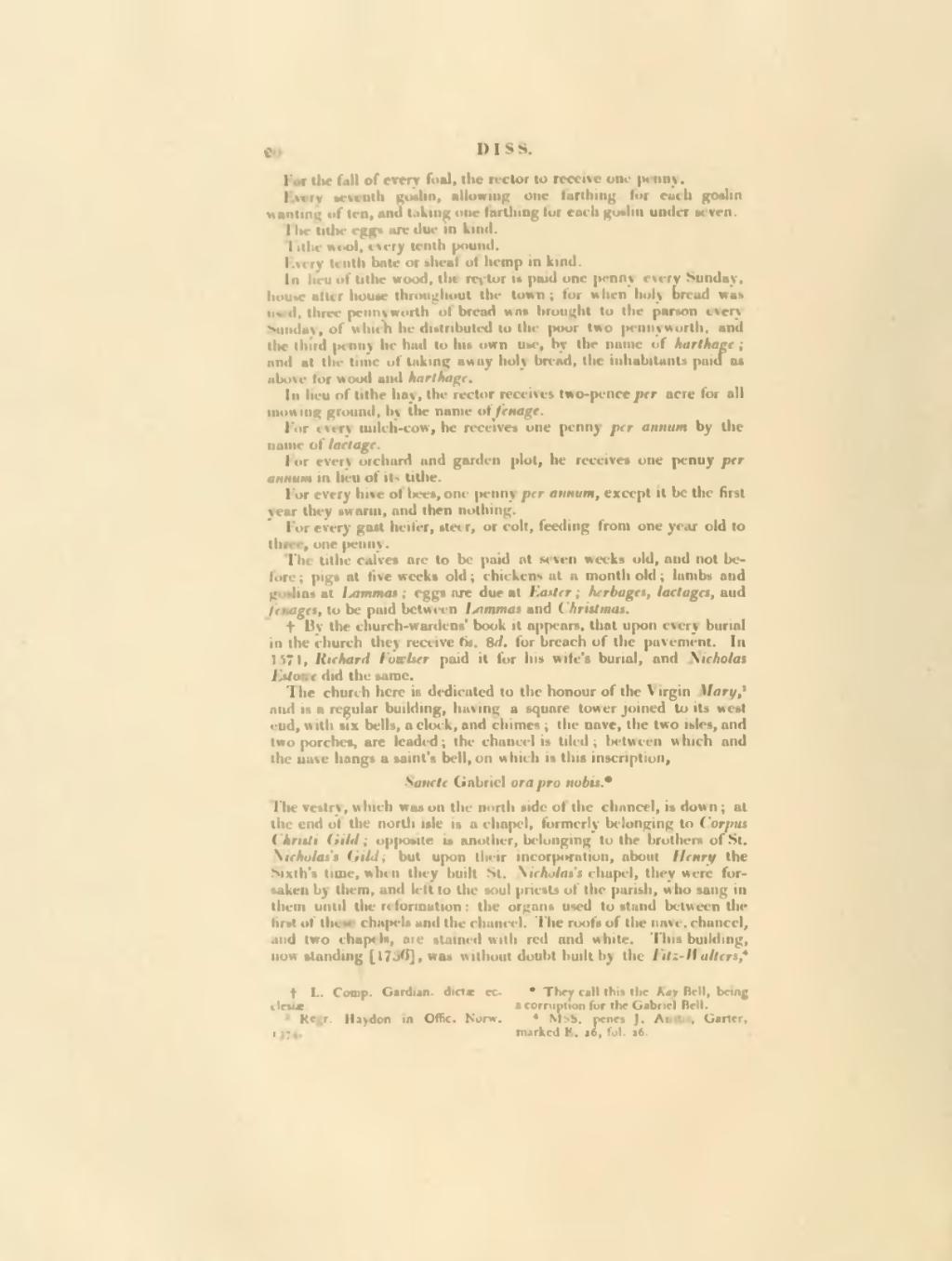in kind.
In lieu of tithe wood, the rector is paid one penny every Sunday, house after house throughout the town; for when holy bread was used, three pennyworth of bread was brought to the parson every Sunday, of which he distributed to the poor two pennyworth, and the third penny he had to his own use, by the name of harthage; and at the time of taking away holy bread, the inhabitants paid as above for wood and harthage.
In lieu of tithe hay, the rector receives two-pence per acre for all mowing ground, by the name of fenage.
For every milch-cow, he receives one penny per annum by the name of lactage.
For every orchard and garden plot, he receives one penny per annum in lieu of its tithe.
For every hive of bees, one penny per annum, except it be the first year they swarm, and then nothing.
For every gast heifer, steer, or colt, feeding from one year old to three, one penny.
The tithe calves are to be paid at seven weeks old, and not before; pigs at five weeks old; chickens at a month old; lambs and goslins at Lammas; eggs are due at Easter; herbages, lactages, and fenages, to be paid between Lammas and Christmas.
By the church-wardens' book it appears, that upon every burial in the church they receive 6s. 8d. for breach of the pavement. In 1571, Richard Fowlser paid it for his wife's burial, and Nicholas Estowe did the same.
The church here is dedicated to the honour of the Virgin Mary, and is a regular building, having a square tower joined to its west end, with six bells, a clock, and chimes; the nave, the two isles, and two porches, are leaded; the chancel is tiled; between which and the nave hangs a saint's bell, on which is this inscription,
Sancte Gabriel ora pro nobis.
The vestry, which was on the north side of the chancel, is down; at the end of the north isle is a chapel, formerly belonging to Corpus Christi Gild; opposite is another, belonging to the brothers of St. Nicholas's Gild; but upon their incorporation, about Henry the Sixth's time, when they built St. Nicholas's chapel, they were forsaken by them, and left to the soul priests of the parish, who sang in them until the reformation: the organs used to stand between the first of these chapels and the chancel. The roofs of the nave, chancel, and two chapels, are stained with red and white. This building, now standing [1736], was without doubt built by the Fitz-Walters,
